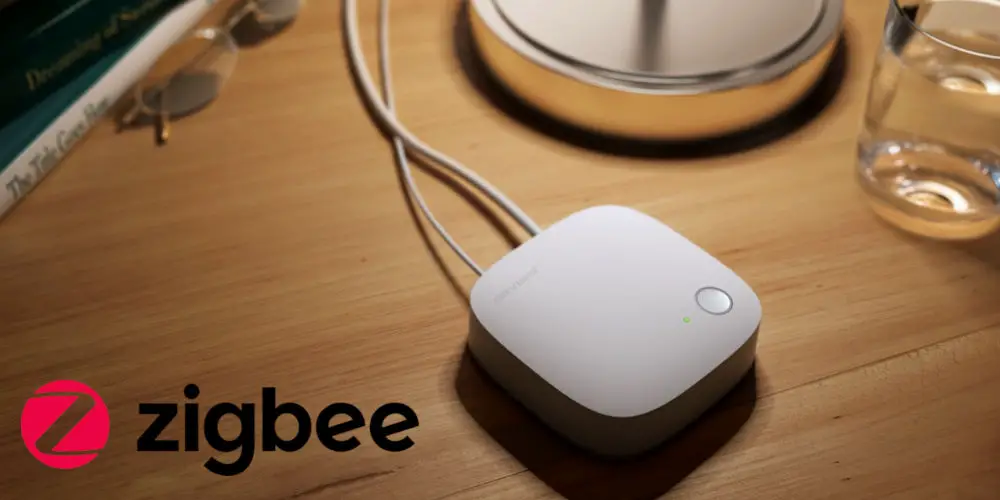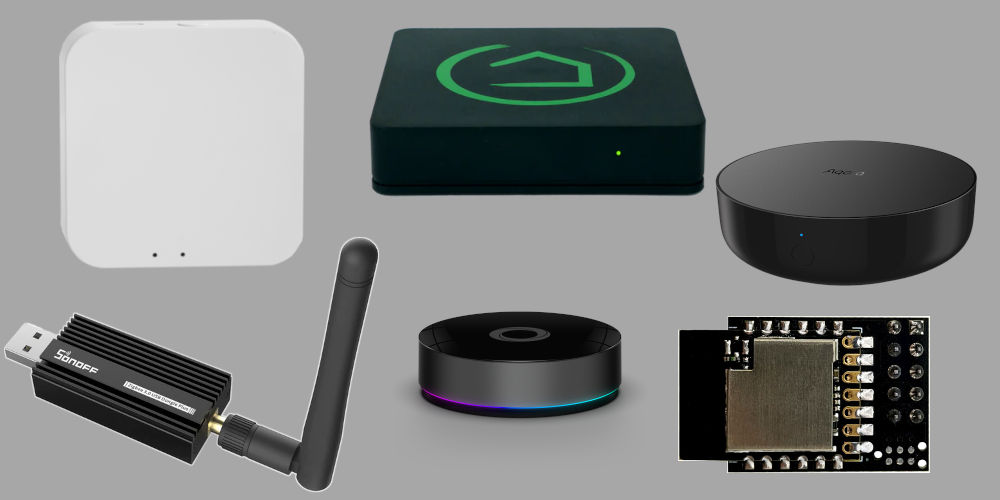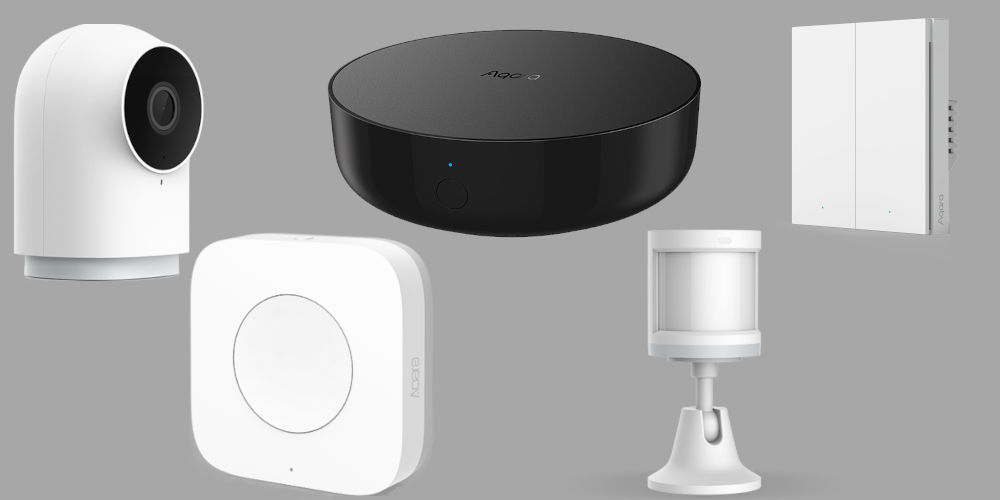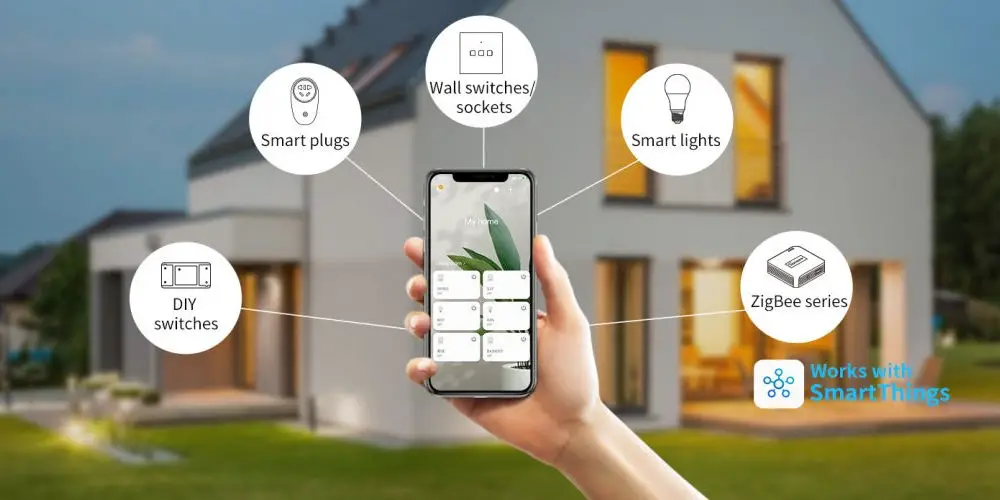Does Zigbee need a hub to work?

Zigbee opens your world to a new level of function, thanks to its smart automation framework. You can use it to build an affordable home automation system. But does Zigbee need a hub to work?
Controlling devices that use the Zigbee protocol requires having a hub or gateway. Thankfully, plenty of options are available. For example, you could use the Samsung SmartThings hub, the Homey Pro, and Aeotec Zi-Stick.
Without a hub, your system won’t work as devices communicate with the hub to send and receive commands, allowing you to control devices using an app, voice control, and IFTTT.
Zigbee devices form a mesh network by repeating communication signals ensuring all devices receive all signals. Your hub sends the initial command and also stores automation sequences, preset, and more.
Let’s explore: Does Zigbee need a hub to work? Or is a controller enough?
What devices do you need in a Zigbee system?
If you’re new to home automation and IoT, you need a few things to automate your home with Z-Wave:
- A hub or controller
- Devices
- App
- Online portal access (possibly).
Your control options will vary depending on which hub you use. Some will work with an online portal, allowing you to program the system from a computer, and also a mobile app for easy operation. But you might be able to do everything from your smartphone or tablet!
Some hubs work with voice assistants, such as Alexa and Google Assistant. Many integrate with IFTTT (If That Then This), allowing you to painlessly combine multiple different smart tech without needing a computer science degree.
Do you need a Zigbee controller instead?
As devices talk to each other, it’s theoretically possible for them to operate without being connected to a Zigbee hub or controller.
However, a hub, controller, or gateway acts as the bridge between the devices. It’s also the bridge between the system and other networks, such as Wi-Fi, Ethernet, or Bluetooth, allowing users to control and monitor their Zigbee devices remotely.
Also, Zigbee hubs or gateways typically allow you to use voice control, scheduling, and automation. They allow you to build a system that works with your lifestyle.
Before adding a device to the Zigbee network, it must talk with a controller to be correctly configured and associated with a group. After the initial setup, devices on the network should be able to continue operating together.
Any difference between a Hub, a Gateway and a Controller?
In short, yes. There are different beasts.
A hub is a microprocessor that runs software. It can find and configure a new device, control multiple devices at once, and run sequences. They are complex and powerful devices.
You can buy microcontrollers that plug into a computer or Raspberry Pi and with some software, turns the computer into a hub. Plenty of Zigbee software options are available, including openHAB, Home Assistant, and Node-RED.
Controllers are devices that send a message to the hub that it converts into a signal that tells a device to complete an action.
For example, you push a button on a scene controller as you want to turn on a light and close the blinds. The hub then instructs those particular devices to complete the required action.
Unlike the hub, most hardware controllers only offer a single way of communication. They send signals but can’t tell if the devices have completed the action.
Most systems use a mix of hardware (remotes, buttons, switches, etc.) and software (app, online portal) controllers.
Zigbee software enables you to view a device’s status as they use two-way communication. In real time, you can see if a device has failed to complete an action. You can either try again or troubleshoot the device.

various Zigbee hubs and gateways
Is it possible to use a Zigbee device with a controller?
You can run a Zigbee device with a controller without needing a hub. However, a hub will give you more options than you’d get with a controller. You might not be able to use all of the device’s functions and features if only have a controller.
Think of it as driving a convertible car while raining with the top stuck open. Not fun.
If you try running the devices with only a controller, you don’t have the cost of the hub. So, the system would be far cheaper. However, you could find that your Zigbee device needs a hub to work, costing you more money, time and effort in the long run.
What Zigbee controllers exist?
There are several Zigbee controllers are available:
- USB dongles
- Aeotec
- Popp
- Aqara
- Raspberry Pi module
The USB dongles and RaZberry boards connect to a computer, allowing it to send and receive commands from your Zigbee network. Think of these devices as a bridge between the wireless Zigbee world and the computer, which controls the network.
USB dongles
Popp, Aeotec and Aqara offer USB dongles that plug into any computer’s USB port. They work with several software options such as openHAB, Home Assistant, Node-RED and other DYI platforms C.
Raspberry Pi module
If you prefer to use a Raspberry Pi, it’s worth buying a Popp ZB-Shield. It’s cheaper than a dongle but will only work on the Pi. Many use a Raspberry Pi due to its compact size. So, it can be an excellent choice.
Why do we prefer hubs?
If you’re serious about building a smart home using Zigbee, you’ll want to invest in a hub that can send and receive signals, create automations, allow you to build presets, and more.
Finding your perfect Zigbee Hub
As with Z-Wave hubs, you’re not short on options! Leading online retailer, Vesternet stocks 14 different controllers and hubs. These include the Homey Bridge, Aeotec SmartThings Hub, Aqara Cube T1 Pr,o and the Popp ZB-Stick.
You find even more options on Amazon, including several by MOES, Innr, SONOFF, and Zemismart. Amazon’s Echo Show 10 also has a Zigbee hub built-in. Very cool indeed!

Various Zigbee devices
Using devices with your Zigbee gateway
By itself, a hub or controller isn’t very useful! So we need to add some devices. Plenty of brands are manufacturing devices that use the Zigbee protocol. There’s at least one solution to automate every repetitive task in your home.
A brand we admire in the space is SONOFF. They offer a wide range of devices, from light bulbs and smart panels to security cameras and a smart curtain motor.
Zigbee devices and gateways are highly affordable. And as a mesh network, you can start with a single dimmer and grow until you’ve automated every aspect of your home.
Controlling your Zigbee automation system
Your gateway will dictate how your system works. Some manufacturers offer a basic online portal and app that is good enough to get you started. Other brands allow you to deploy advanced programming and integrations.
If you’re already using Amazon’s Alexa or the Google Assistant, you’ll be glad to know that many systems work with these virtual assistants. Some work with IFTTT, allowing you to build a system that uses multiple protocols without a computer programming degree!
How you operate your system depends on your requirements, devices, and lifestyle. So it’s worth researching the market and finding a system that offers the level of flexibility you’re after.

photo by SONOFF
So, does Zigbee need a hub for your home automation system to work?
If you’re wondering: Does Zigbee need a hub to work? The answer is yes. Thankfully, plenty of options are available, including SONOFF, Homey, the SmartThings hub, and several Aeotec gateways.
And while you can use a Zigbee controller, they don’t have the level of functionality that a hub offers. If you’re serious about home automation, you’ll want to invest in a suitable hub.
After purchasing a Zigbee hub, you can start adding devices and use your smartphone to control them. You’ll soon have your entire home automated.




